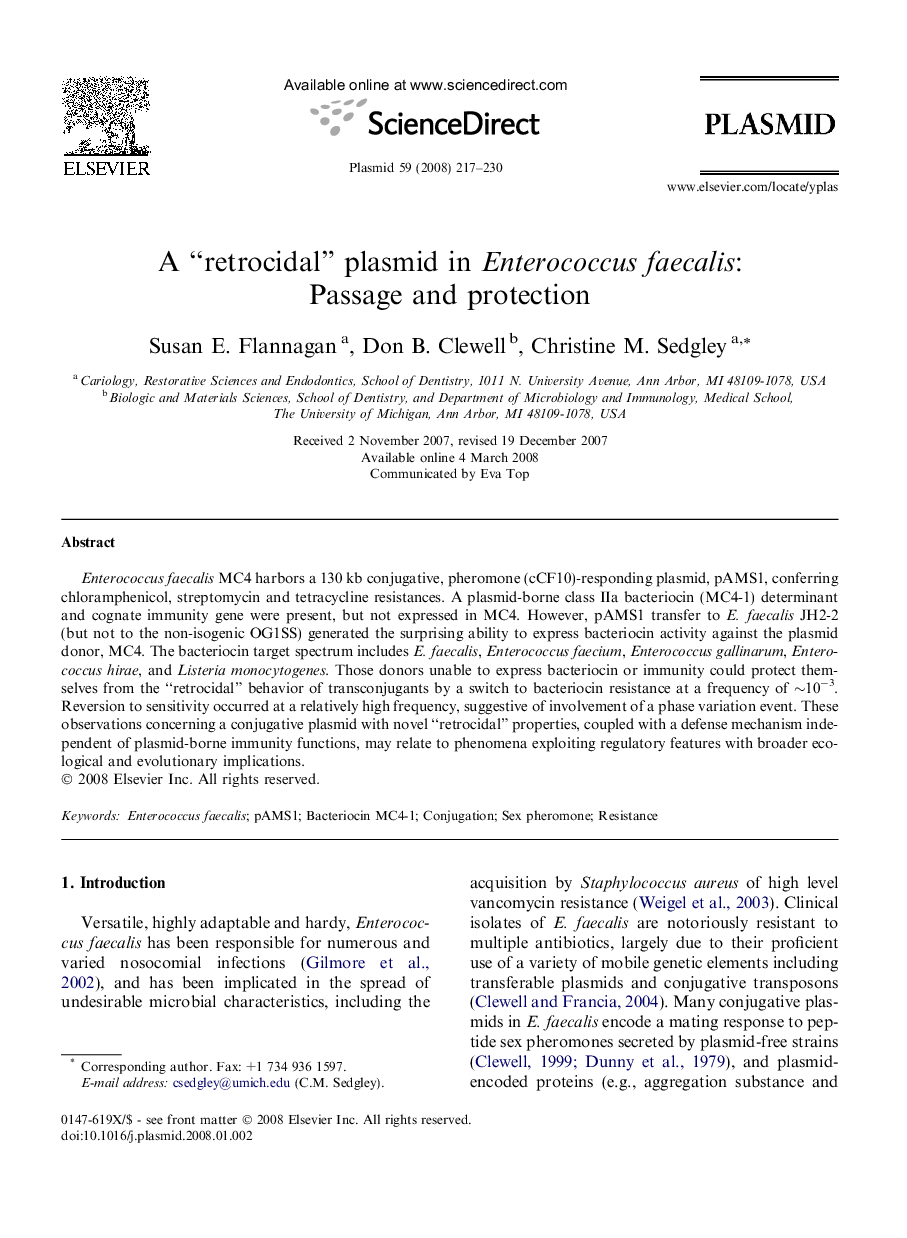| Article ID | Journal | Published Year | Pages | File Type |
|---|---|---|---|---|
| 2824461 | Plasmid | 2008 | 14 Pages |
Enterococcus faecalis MC4 harbors a 130 kb conjugative, pheromone (cCF10)-responding plasmid, pAMS1, conferring chloramphenicol, streptomycin and tetracycline resistances. A plasmid-borne class IIa bacteriocin (MC4-1) determinant and cognate immunity gene were present, but not expressed in MC4. However, pAMS1 transfer to E. faecalis JH2-2 (but not to the non-isogenic OG1SS) generated the surprising ability to express bacteriocin activity against the plasmid donor, MC4. The bacteriocin target spectrum includes E. faecalis, Enterococcus faecium, Enterococcus gallinarum, Enterococcus hirae, and Listeria monocytogenes. Those donors unable to express bacteriocin or immunity could protect themselves from the “retrocidal” behavior of transconjugants by a switch to bacteriocin resistance at a frequency of ∼10−3. Reversion to sensitivity occurred at a relatively high frequency, suggestive of involvement of a phase variation event. These observations concerning a conjugative plasmid with novel “retrocidal” properties, coupled with a defense mechanism independent of plasmid-borne immunity functions, may relate to phenomena exploiting regulatory features with broader ecological and evolutionary implications.
